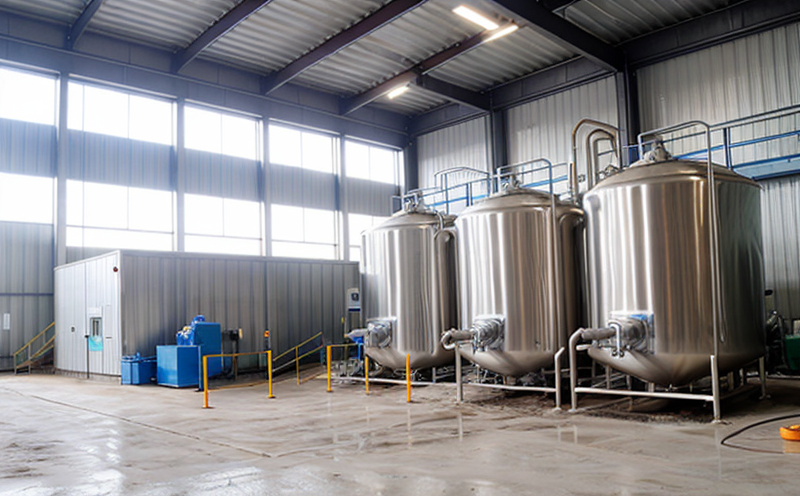EPA 1664 Oil and Grease Hexane Extractable Test in Industrial Water
The EPA 1664 method is a standardized analytical procedure used to determine the concentration of oil and grease components that are hexane extractable from water samples. This test is critical for industries with significant water usage, such as refineries, food processing plants, and chemical manufacturers.
This method measures the total amount of petroleum hydrocarbons present in industrial process waters, which can originate from various sources including raw materials, lubricants, and accidental spills. The hexane extractable portion is often a key indicator of contamination levels that require monitoring and control to ensure compliance with environmental regulations.
The procedure involves the extraction of oil and grease components using hexane, followed by gravimetric determination or infrared (IR) spectroscopy analysis of the extract. This method provides insights into the organic fraction of water samples, which can be used for evaluating treatment efficiency and identifying sources of contamination in industrial processes.
Understanding the hexane-extractable oils and greases is particularly important because these components are non-polar hydrocarbons that do not dissolve in water but remain suspended or float on top. Their presence in industrial process waters can indicate potential issues with wastewater treatment systems, equipment integrity, and overall plant hygiene.
The EPA 1664 method is widely recognized for its reliability and accuracy in quantifying these components, making it an essential tool for industries seeking to maintain compliance with environmental regulations. By regularly monitoring oil and grease levels through this test, companies can proactively address any issues that may arise from contamination or inefficiencies within their operations.
The significance of the EPA 1664 method extends beyond regulatory compliance; it also plays a crucial role in maintaining operational efficiency by ensuring that water quality standards are met. This is especially important for industries with stringent requirements, such as pharmaceuticals and electronics manufacturing, where even trace amounts of contaminants can affect product quality.
The test results provide valuable data for process optimization, enabling companies to identify areas for improvement in wastewater treatment processes. By implementing effective strategies based on these findings, businesses can reduce operational costs, minimize environmental impact, and enhance overall performance.
Scope and Methodology
| Step | Action | Description |
|---|---|---|
| 1. | Collection of Water Sample | Gather representative water samples from the industrial process. Ensure that the sample is free from external contamination and properly labeled for identification purposes. |
| 2. | Extraction with Hexane | Transfer the collected water sample into a suitable container and add an appropriate volume of hexane. Shake vigorously to ensure thorough mixing, then allow the mixture to settle. |
| 3. | Vacuum Distillation | Remove hexane using vacuum distillation at a temperature not exceeding 40°C until only the non-volatile components remain. This step ensures accurate measurement of oil and grease content. |
| 4. | Weighing Extracted Material | Burn off any remaining hexane under a stream of nitrogen gas to avoid combustion hazards, then weigh the residue. This weight corresponds directly to the oil and grease content in mg/L. |
Quality and Reliability Assurance
- Use high-quality hexane for extraction, ensuring it meets ASTM standards to prevent contamination of the sample.
- Conduct all operations in a controlled environment to minimize external factors that could affect the accuracy of results.
- Calibrate all instruments regularly using certified reference materials and traceable calibration standards.
Environmental and Sustainability Contributions
- The EPA 1664 method helps in reducing the discharge of oil and grease into water bodies, thereby protecting aquatic ecosystems.
- By identifying sources of contamination early, industries can implement preventive measures to avoid costly clean-ups and regulatory penalties.





